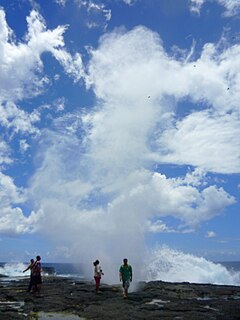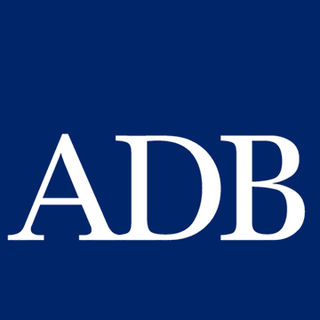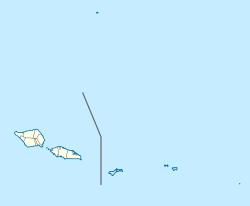
Meridian Energy Limited is a New Zealand electricity generator and retailer. The company generates the largest proportion of New Zealand's electricity, generating 35 percent of the country's electricity in the year ending December 2014, and is the fourth largest retailer, with 14 percent of market share in terms of customers as of December 2015.

Hydroelectricity is electricity produced from hydropower. In 2015, hydropower generated 16.6% of the world's total electricity and 70% of all renewable electricity, and was expected to increase about 3.1% each year for the next 25 years.

The Manantali Dam is a multi-purpose dam on the Bafing river in the Senegal River basin, 90 kilometres (56 mi) to the south-east of Bafoulabé, in Mali's Kayes Region.
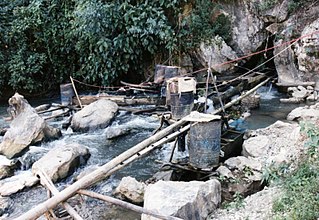
Micro hydro is a type of hydroelectric power that typically produces from 5 kW to 100 kW of electricity using the natural flow of water. Installations below 5 kW are called pico hydro. These installations can provide power to an isolated home or small community, or are sometimes connected to electric power networks, particularly where net metering is offered. There are many of these installations around the world, particularly in developing nations as they can provide an economical source of energy without the purchase of fuel. Micro hydro systems complement solar PV power systems because in many areas, water flow, and thus available hydro power, is highest in the winter when solar energy is at a minimum. Micro hydro is frequently accomplished with a pelton wheel for high head, low flow water supply. The installation is often just a small dammed pool, at the top of a waterfall, with several hundred feet of pipe leading to a small generator housing. In low head sites, generally water wheels and Archimedes screws are used.

The Tribute Power Station is a conventional hydroelectric power station located in Western Tasmania, Australia.

The production of renewable energy in Scotland is an issue that has come to the fore in technical, economic, and political terms during the opening years of the 21st century. The natural resource base for renewable energy is extraordinary by European, and even global standards, with the most important potential sources being wind, wave, and tide.

Hydroelectric power in New Zealand has been a part of the country's energy system for over 100 years and continues to provide more than half of the country's electricity needs. Early schemes such as the Waipori scheme commissioned in 1903 and the Lake Coleridge power station commissioned in 1914 established New Zealand's use of renewable hydro energy.
The energy policy of Malaysia is determined by the Malaysian Government, which address issues of energy production, distribution, and consumption. The Department of Electricity and Gas Supply acts as the regulator while other players in the energy sector include energy supply and service companies, research and development institutions and consumers. Government-linked companies Petronas and Tenaga Nasional Berhad are major players in Malaysia's energy sector.
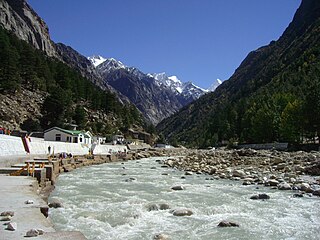
Loharinag Pala Hydro Power Project is a run-of-the-river hydroelectricity generating project planned by the National Thermal Power Corporation (NTPC) Ltd to have an output capacity of 600 MW. The project is located on the river Bhagirathi, the headstream of the Ganges River at Loharinag Pala, below the confluence of the Songad River, next to NH 108 in Uttarkashi District of Uttarakhand state, India. This is about 100 kilometres (62 mi) upstream of the Tehri Dam.

India is the 7th largest producer of hydroelectric power in the world. As of 30 April 2017, India's installed utility-scale hydroelectric capacity was 44,594 MW, or 13.5% of its total utility power generation capacity. Additional smaller hydroelectric power units with a total capacity of 4,380 MW have been installed. India's hydroelectric power potential is estimated at 148,700 MW at 60% load factor. In the fiscal year 2016-17, the total hydroelectric power generated in India was 122.31 TWh with an average capacity factor of 33%.

The Lower Se San 2 Dam is a hydroelectric dam under development on the Se San River in Stung Treng Province, northeastern Cambodia. The Se San River is a major tributary of the Mekong River. The dam site is located 25 kilometres (16 mi) east of the provincial capital, also named Stung Treng. The first turbine began producing electricity in November 2017. The dam was officially opened on December 18, 2018.
Bethlehem Hydro owns and operates two small hydro power plants situated in the Dihlabeng Local Municipality in the Free State province of South Africa. The scheme utilizes the water supplied to South Africa by the Lesotho Highlands Water Project, which releases water into the As River via a tunnel outlet near the town of Clarens. South Africa has limited potential for hydro energy due to low average annual rainfall making projects like Bethlehem Hydro rare. The project was identified in 1999 and developed by NuPlanet Project Development. The two power stations in the scheme will cut back carbon dioxide emissions by 33,000 tons per year by reducing the demand for traditional fossil-fuel power stations.

Renewable energy in Nepal is a sector that is rapidly developing in Nepal. While Nepal mainly relies on hydro electricity for its energy needs, solar and wind power is being seen as an important supplement to solve its energy crisis.

Renewable energy in Afghanistan includes biomass, hydropower, solar, wind power. Afghanistan is a landlocked country located in Asia that holds a spot as one of the countries with a smaller ecological footprint. It has been contended at different levels that hydropower may be an easier source of renewable energy for Afghanistan than other nations due to their geographical location. Their mountainous environment facilitates hydro dams and other facets of hydro energy.
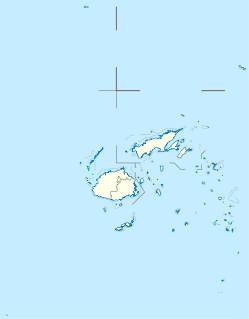
The Nadarivatu Dam, also known as the Korolevu Dam, is a concrete gravity dam on the upper reaches of the Sigatoka River in Nadarivatu District of Nadroga-Navosa Province, Fiji. The primary purpose of the dam is to generate hydroelectric power in a 41.7 megawatts (55,900 hp) run-of-the-river scheme. The Nadarivatu Hydropower Scheme was first identified in 1977 during a hydropower study. Details plans for the project were developed in 2002 and major construction began in 2009. The power station was commissioned on 7 September 2012 but an inauguration ceremony led by Prime Minister Frank Bainimarama was held a week later on 14 September. Funding and loans for the project was provided by several organizations to include the China Development Bank, Fiji Electricity Authority bonds, ADZ Bank. The 40 m (130 ft) tall dam diverts water from the Sigatoka River through a 3,225 metres (10,581 ft) long headrace/penstock tunnel to a power station along the Ba River to the southwest. The power station contains two 20.85 megawatts (27,960 hp) Pelton turbine-generators. The drop in elevation between the reservoir and the power station affords a gross hydraulic head of 335.7 metres (1,101 ft).

The Afulilo Dam is a gravity dam on the Afulilo River about 3 km (1.9 mi) south of Ta'elefaga in the district of Va'a-o-Fonoti on Upolu island of Samoa. The primary purpose of the dam is hydroelectric power generation and it supports a 4 megawatts (5,400 hp) power station. It is the largest hydroelectric power station by installed capacity in Samoa. First studied in 1980, construction on the project began in 1990 and the power station was commissioned in 1993. Funding for the US$26.6 million project was provided by the World Bank, Asian Development Bank, International Development Association, European Investment Bank, and European Economic Community loans and grants.
Myanmar had a total primary energy supply (TPES) of 16.57 Mtoe in 2013. Electricity consumption was 8.71 TWh. 65% of the primary energy supply consists of biomass energy, used almost exclusively (97%) in the residential sector. Myanmar’s energy consumption per capita is one of the lowest in Southeast Asia due to the low electrification rate and a widespread poverty. Energy consumption is growing rapidly, however, with an average annual growth rate of 3.3% from 2000 to 2007.
In 2013, renewable energy provided 26.44% of the total electricity in the Philippines and 19,903 gigawatt-hours (GWh) of electrical energy out of a total demand of 75,266 gigawatt-hours. The Philippines is a net importer of fossil fuels. For the sake of energy security, there is momentum to develop renewable energy sources. The types available include hydropower, geothermal power, wind power, solar power and biomass power. The government of the Philippines has legislated a number of policies in order to increase the use of renewable energy by the country.


